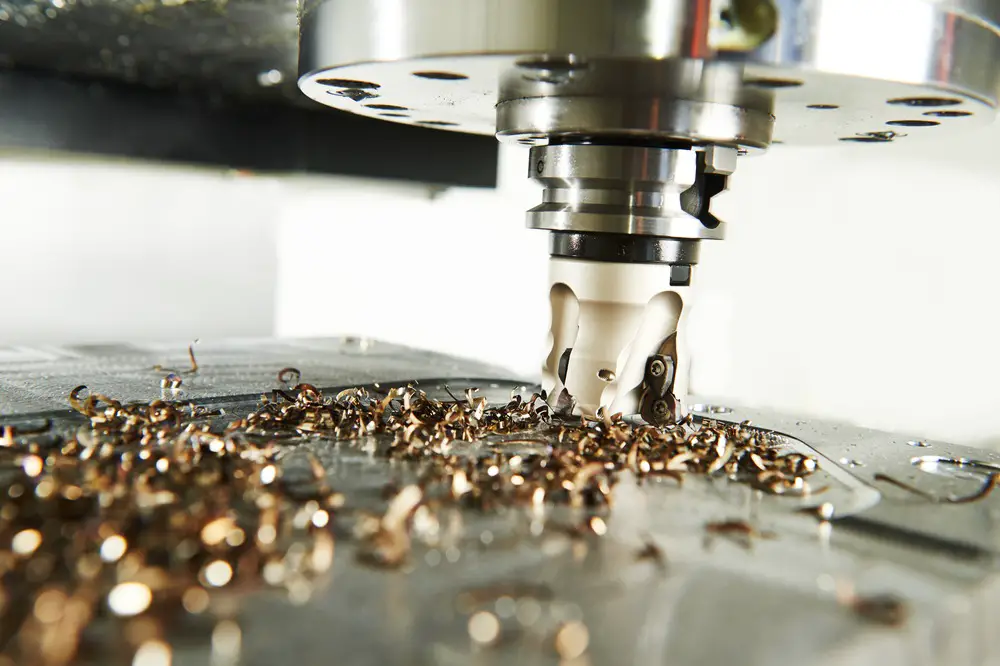Yes, CNC routers can cut metal. While the machines are primarily designed to cut wood, plastic, and composite materials, they can also cut metal. This process is called CNC milling, i.e., the removal of material from a workpiece using rotary cutters like the CNC router.
During the milling process, the CNC router feeds the workpiece to the cutting tool in a similar direction as the tool’s rotation. CNC milling was introduced to replace traditional machining, which was more labor-intensive and slower.
Benefits of CNC Milling over Traditional Methods
The main difference between the two methods lies in their approaches, and the fact that one is automated and the other is labor-intensive. Other benefits of CNC machining over traditional machining method include:
High-quality Replication
CNC router machines can produce thousands of identical parts within a short period; a feat impossible using handheld machines. CNC milling machines only need to be programmed to perform the same cut repeatedly without reducing the quality of the end-product.
Conventional machining, on the other hand, requires more skilled operators to place the tool on the workspace, which takes time and patience. Variations in the quality of the end-product are likely to occur.
Mass Production of Metal Products
Manual CNC machining is ideal for low volume products. With CNC machines, manufacturers can achieve maximum accuracy whether tasked to produce a few products or in masses. What’s more, they are of high-quality hence able to resist wear and tear, a common feature in conventional machining methods. CNC machining utilize software that can be updated depending on the specifications of the product to allow easy manufacture of extremely complex parts.
Ability to Create Complex Parts
CNC machines can be updated and re-programmed at any time, giving users the freedom to produce 2D, 3D, 4D, and 5D parts with much ease. This feature makes it easy for users to transition from regular CNC machined products and those that need complex processes. What’s more, the ability of the machine to store designs, allows you to revisit the desired shape and modify it.
No Need for Prototypes
Prototypes are critical to producing the end product. Before the invention of CNC technology, manufacturers would design prototypes, test them, and then proceed to the machining process. Manual prototyping takes a long time, sometimes months, due to the numerous modifications required. The invention of CNC machines introduced software programming where users can simulate the design and work with it under realistic scenarios. As such, manufacturers don’t need to spend additional expenses on prototype development, labor, and production time is reduced.
Precision
CNC routers focus on machining with precision. The machines maintain the specifications given by the operator throughout the production process. What’s more, the process is visually tested to ensure the desired dimensions and effects are achieved.
How CNC Routers Cut Metal
The machine cuts non-ferrous metals like aluminum, brass, alloy steel, and stainless steel. Additionally, you don’t need to purchase a different router to cut metals; you only need to apply a different technique when cutting the materials. Cutting metals is different from cutting wood in that they have a narrower range of optimum feed and speed than timber.
Thus, cutting metal materials at a higher speed causes the cutter to wear out rapidly or break. Also, metals like aluminum are sticky deposits buildup on the edges of the cutting tools, causing the bit to weld on to the metal.
Aluminum particularly has a pretty low melting point compared to other metals as it melts at 1200 degrees Fahrenheit. Thus cutting the metal at a rate higher than 13000 RPM causes the end mill to get hot, causing the aluminum to melt.
Steel, on the other hand, has a higher melting point of 2100 degrees Fahrenheit, making it easier to cut than aluminum. Some machinists find mild steel particularly easy to mill because the end mill can cut at a lower feed rate and remove the material.
Millers can control the temperature of the end mill using different techniques when cutting aluminum surfaces. They include:
- Pouring a liquid: A special liquid is combined with the cutting liquid to enhance cutting efficiency
- Spraying the end mill: The end mill is sprayed using a cutting fluidlike Isopropyl Alcohol
- Blowing cold air on the end mill: A vortex system is used to generate cold air and expel hot air
- Find the appropriate depth per pass: This method involves finding a balance of spindle RPM, depth per pass, feed rate, helix angle, and end mill flute to ensure dry cutting. Most manufacturers use this method. Achieving such a balance is no easy task. Industry experts explain that finding a balance of those parameters will be a breakthrough in metal cutting.
How to Avoid Vibration
When cutting metal, you will likely experience vibration. The best way to eliminate vibration is to use sheetrock screws to secure the metal onto the spoil board. The premise is to secure the workpiece firmly to prevent it from moving and ensure the clamping source is close to the cutting device.

